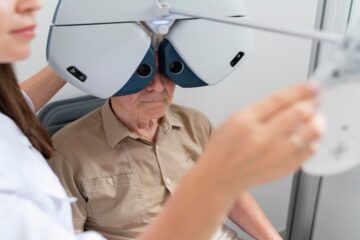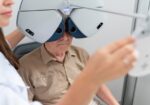The Essential Guide to Using the Senn Retractor for Surgical Procedures

Key Takeaways:
- The Senn retractor is a versatile tool used in surgical procedures to provide optimal visualization and access to the surgical site.
- The Senn retractor is named after the Swiss surgeon August Senn and is made of stainless steel with a flat blade on one end and a curved, rounded end on the other.
- The retractor is important in surgical procedures as it allows for tissue retraction, providing a clear view for the surgeon and enabling precise manipulation and operation.
- The Senn retractor has evolved over time and comes in different types including straight, double-ended, and self-retaining retractors.
- The retractor enhances surgical precision, is versatile across various surgical specialties, and offers advantages over other retraction techniques.
- Proper technique for using the Senn retractor includes preoperative preparation, safe deployment, and avoiding common mistakes.
- Maximizing the effectiveness of the Senn retractor involves using innovative approaches, optimizing retraction techniques for different patient populations, and staying updated on new research and developments.
- Mastering the use of the Senn retractor requires training and adherence to proper technique.
Introduction to the Senn Retractor
The Senn retractor is a versatile tool used in surgical procedures to provide optimal visualization and access to the surgical site. It is commonly used to retract soft tissues, muscles, and organs, allowing surgeons to perform various procedures with precision and efficiency.
What is the Senn Retractor and its Importance in Surgical Procedures?
The Senn retractor, named after the Swiss surgeon August Senn, is a handheld instrument with a flat blade on one end and a curved, rounded end on the other. It is typically made of stainless steel and comes in various sizes to accommodate different surgical needs.
The importance of the Senn retractor in surgical procedures cannot be overstated. Its primary function is to retract tissues and organs away from the surgical site, providing a clear view for the surgeon. By holding the tissue in place, the retractor enables surgeons to manipulate and operate on specific areas without obstructions.
The History and Evolution of the Senn Retractor
The development of the Senn retractor dates back to the late 19th century. August Senn, a renowned surgeon, recognized the need for a tool that could facilitate tissue retraction during surgeries. The first designs of the Senn retractor were relatively simple, consisting of a flat blade with a handle.
Over time, as surgical techniques advanced and the need for specialized retractors became apparent, the Senn retractor underwent several modifications. Different blade shapes, sizes, and handle designs were introduced to cater to the specific requirements of various surgical procedures.
Today, the Senn retractor has evolved into a versatile instrument utilized in various surgical specialties, including general surgery, orthopedics, plastic surgery, and gynecology.
Understanding the Different Types of Senn Retractors
There are several types of Senn retractors available, each designed to meet the unique needs of different surgical procedures. The most common types include:
- Straight Senn retractor: This is the standard Senn retractor with a straight, flat blade on one end and a rounded, curved end on the other. It is used for general surgical procedures.
- Double-ended Senn retractor: This retractor features a straight blade on one end and a curved blade on the other end. It offers versatility and is commonly used in plastic surgery.
- Self-retaining Senn retractor: This type of Senn retractor has adjustable hooks that can be locked in place, allowing for hands-free retraction. It is particularly useful in procedures requiring prolonged retraction.
Each type of Senn retractor has its own set of advantages and ideal applications. Surgeons should choose the appropriate type based on the specific surgical requirements and desired retraction technique.
Benefits and Uses of the Senn Retractor
Enhancing Surgical Precision with the Senn Retractor
The Senn retractor plays a crucial role in enhancing surgical precision by providing a clear and unobstructed view of the surgical site. By retracting tissues and organs, it allows surgeons to precisely visualize and access the targeted area, facilitating accurate manipulation, dissection, and suturing.
With improved visualization, surgeons can effectively identify anatomical structures, avoid inadvertent injuries, and ensure meticulous surgical techniques. The Senn retractor acts as an assistant, enabling surgeons to perform procedures with greater accuracy and reducing the risk of complications.
The Versatility of the Senn Retractor in Various Surgical Specialties
One of the remarkable features of the Senn retractor is its versatility. It finds applications in a wide range of surgical specialties, making it an invaluable tool for surgeons across different fields.
In general surgery, the Senn retractor is commonly used in abdominal procedures to retract the peritoneum and expose the underlying organs. It is also utilized in orthopedic surgeries to retract muscles and soft tissues, allowing access to bones and joints.
In plastic surgery, the Senn retractor aids in retraction during procedures such as breast augmentation, abdominoplasty (tummy tuck), and facial rejuvenation surgeries. Its ability to provide gentle and precise retraction makes it an essential instrument in achieving optimal surgical outcomes.
Furthermore, gynecological procedures often involve the use of the Senn retractor to expose and retract the uterus, ovaries, and surrounding structures. Its versatility and ease of use have made it a staple in gynecologic surgeries.
Advantages of the Senn Retractor Compared to Other Retraction Techniques
While there are various retraction techniques available, the Senn retractor offers distinct advantages that set it apart from other methods.
One of the primary advantages is its simplicity and user-friendliness. The Senn retractor is easy to handle and does not require complex setups or additional equipment, making it convenient for both surgeons and surgical staff.
Furthermore, the Senn retractor enables surgeons to achieve atraumatic retraction. The rounded, curved end of the retractor minimizes the risk of tissue damage or injury during retraction, ensuring patient safety and postoperative recovery.
Compared to self-retaining retractors, the Senn retractor provides the flexibility to adjust the degree of retraction according to the specific surgical requirements. Surgeons have precise control over the extent of tissue displacement, promoting optimal exposure while minimizing unnecessary trauma.
The Senn retractor’s versatility, simplicity, and atraumatic nature make it a preferred choice for many surgeons across different specialties.
Proper Technique for Using the Senn Retractor
Preoperative Preparation and Positioning for Optimal Retraction
Prior to using the Senn retractor, proper preoperative preparation and positioning are crucial to ensure optimal retraction during the surgical procedure.
Firstly, the surgical site should be thoroughly cleaned and disinfected to minimize the risk of infection. The patient should be positioned in a manner that provides easy access for the surgeon while maintaining the patient’s comfort and safety.
When using the Senn retractor, it is important to consider the tension and angle of retraction. Excessive tension or improper angulation can lead to tissue damage or impaired blood flow. The surgeon should communicate with the assistant who is responsible for holding the retractor to ensure appropriate retraction.
Additionally, proper lighting and visualization aids, such as magnifying glasses or surgical loupes, can be used to enhance visualization during the procedure. Adequate lighting is essential for the surgeon to accurately identify anatomical structures and perform precise maneuvers.
Step-by-Step Guide to Safely Deploying the Senn Retractor
Using the Senn retractor requires careful technique and attention to detail to ensure safe and effective retraction. The following step-by-step guide provides an overview of the proper method:
- Choose the appropriate size and type of Senn retractor based on the surgical procedure and the desired retraction technique.
- Hold the handle of the retractor firmly, ensuring a comfortable grip.
- Carefully insert the curved end or the flat blade of the retractor into the surgical incision or a predetermined access point.
- Gently and gradually retract the tissues or organs away from the surgical site, being mindful of the surrounding structures.
- Communicate effectively with the surgical team, adjusting the degree of retraction as needed.
- Regularly inspect the retraction site for any signs of tissue trauma or impaired blood flow.
- After the surgical procedure, remove the retractor gently and ensure adequate hemostasis and closure of the incision.
It is important to note that the specific steps may vary depending on the surgical procedure and the surgeon’s preference. Adhering to aseptic techniques and maintaining constant vigilance throughout the retraction process are essential for patient safety and optimal surgical outcomes.
Common Mistakes to Avoid When Using the Senn Retractor
While the Senn retractor is a valuable tool in surgical procedures, there are potential pitfalls that should be avoided to ensure its effective and safe use.
One common mistake is applying excessive force during retraction. Excessive force can lead to tissue trauma, compromising the surgical outcome and potentially causing complications such as bleeding or nerve damage.
Improper positioning of the retractor can also pose risks. Placing the retractor too close to vital structures or at an incorrect angle may result in inadvertent injuries or compromised blood supply to the tissues.
Additionally, inadequate communication between the surgeon and the assistant handling the retractor can lead to suboptimal retraction. Clear and concise communication is necessary to ensure proper retraction and minimize the risk of complications.
By being aware of these common mistakes and taking proactive measures to prevent them, surgeons can optimize the use of the Senn retractor and improve patient outcomes.
Tips and Tricks for Maximizing the Effectiveness of the Senn Retractor
Using Innovative Approaches to Overcome Surgical Challenges
While the Senn retractor is a versatile tool, certain surgical scenarios may pose challenges that require innovative solutions. Surgeons can employ various techniques to maximize the effectiveness of the Senn retractor in such situations.
For instance, in procedures involving deep or narrow surgical sites, the use of angled Senn retractors may provide better access and visualization. Angled retractors allow surgeons to reach difficult-to-reach areas, facilitating precise manipulation and reducing the need for additional instruments.
In complex surgeries where multiple retractors are required, cooperation between the surgical team becomes crucial. Coordination and proper positioning of each retractor can optimize exposure and allow for seamless progress throughout the procedure.
Furthermore, combining the use of the Senn retractor with other specialized instruments or advanced technologies, such as laparoscopic or robotic-assisted surgical systems, can further enhance surgical precision and outcomes. Exploring and implementing innovative approaches can help overcome challenging surgical scenarios and improve patient care.
Optimizing Retraction Techniques for Different Patient Populations
Each patient population may have unique anatomical considerations that demand tailored retraction techniques. Surgeons should adapt their approach when using the Senn retractor to optimize outcomes for different patient groups.
For example, in pediatric surgery, the size and shape of the Senn retractor may need to be adjusted to accommodate the smaller anatomy of children. The retraction technique should be gentle and atraumatic to minimize the risk of complications or undue discomfort.
In geriatric patients, who may have fragile or compromised tissues, gentle retraction becomes even more crucial. Surgeons should exercise caution and modify the retraction technique to avoid tissue trauma or damage.
By considering the unique characteristics of each patient population, surgeons can tailor their retraction techniques and optimize the use of the Senn retractor for improved surgical outcomes.
Exploring New Research and Developments in Senn Retractor Design
The field of surgical instruments is constantly evolving, and the Senn retractor is no exception. Ongoing research and advancements in design aim to further improve the effectiveness and usability of the Senn retractor.
Researchers are exploring innovative materials that offer enhanced tactile feedback, superior ergonomics, and reduced tissue trauma. Advancements in retractor coating technologies may also help minimize tissue adhesion and improve ease of use.
Furthermore, the integration of additional functionalities, such as built-in illumination or suction capabilities, could expand the versatility of the Senn retractor and provide added benefits for surgeons.
Staying informed about the latest research and developments in Senn retractor design allows surgeons to make informed decisions and adopt new techniques or instrument designs that can lead to better patient outcomes.
As with any surgical instrument, mastering the use of the Senn retractor requires experience, skill, and adherence to proper technique. Surgeons and surgical teams should undergo comprehensive training and stay updated on best practices to ensure safe and effective utilization of this valuable tool.
FAQ
Q: What is the Senn retractor and its importance in surgical procedures? – The Senn retractor is a handheld instrument with a flat blade on one end and a curved, rounded end on the other. It is used to retract tissues and organs away from the surgical site, providing a clear view for the surgeon and enabling precise manipulation and operation.
Q: What is the evolution of the Senn retractor? – The Senn retractor was first developed in the late 19th century and has undergone modifications over time. Different blade shapes, sizes, and handle designs were introduced to cater to the requirements of various surgical procedures.
Q: What are the different types of Senn retractors? – The main types of Senn retractors include straight Senn retractors, double-ended Senn retractors, and self-retaining Senn retractors. Each type has its own advantages and is used in different surgical procedures.
Q: How does the Senn retractor enhance surgical precision? – The Senn retractor provides a clear and unobstructed view of the surgical site, allowing surgeons to visualize and access the targeted area more accurately. This facilitates precise manipulation, dissection, and suturing, ultimately enhancing surgical precision.
Q: In which surgical specialties is the Senn retractor versatile? – The Senn retractor is versatile and finds applications in various surgical specialties, including general surgery, orthopedics, plastic surgery, and gynecology.
Q: What are the advantages of the Senn retractor compared to other retraction techniques? – The Senn retractor is simple to use and does not require complex setups or additional equipment. It provides atraumatic retraction, allows for flexibility in adjusting the degree of retraction, and is versatile across different surgical specialties.
Q: What is the proper technique for using the Senn retractor? – Proper technique for using the Senn retractor includes preoperative preparation, safe deployment, and avoiding common mistakes. It is important to consider tension, angle of retraction, communication with the surgical team, and regular inspection of the retraction site.
Q: What are tips and tricks for maximizing the effectiveness of the Senn retractor? – Surgeons can use innovative approaches to overcome surgical challenges, optimize retraction techniques for different patient populations, and stay updated on new research and developments in Senn retractor design. Adhering to proper technique and undergoing comprehensive training are essential.















